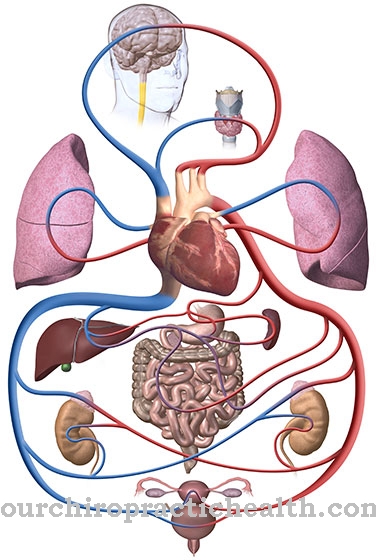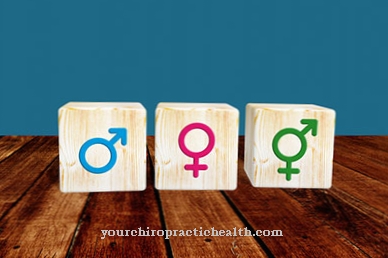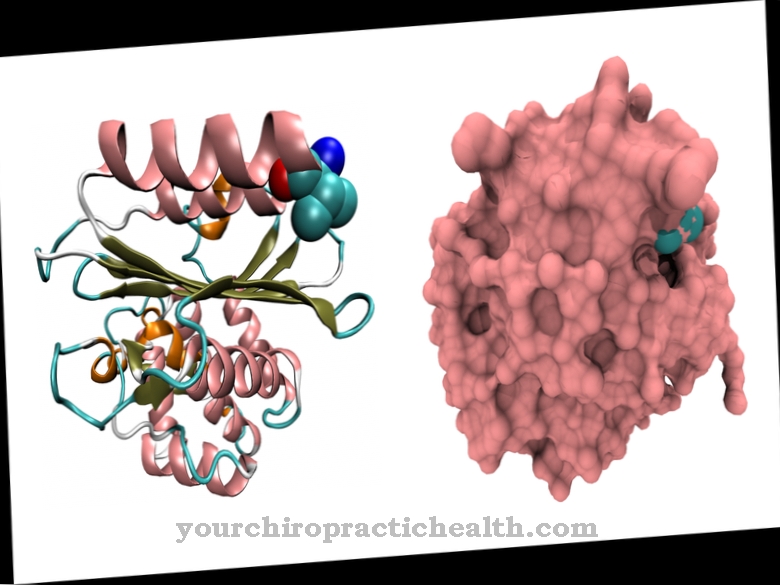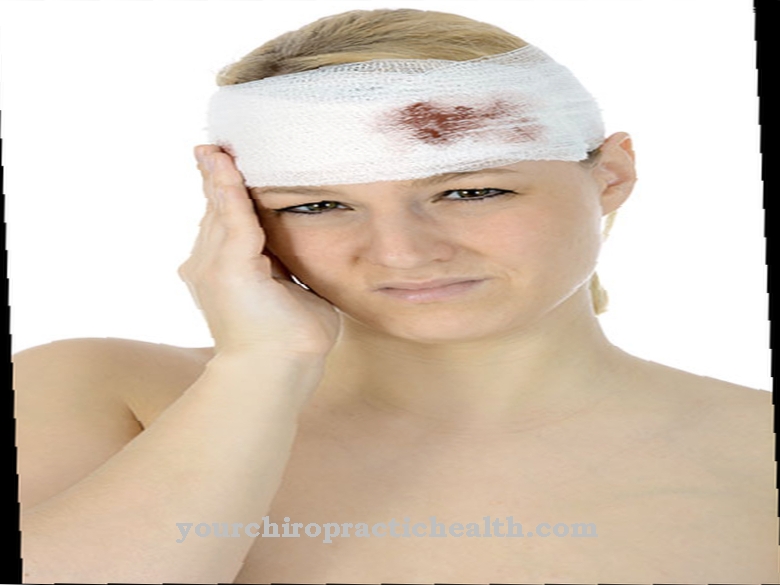Pomarino's disease or Persistent forefoot gait is a gait abnormality that occurs in approximately 5% of preschool children. It is often recognized during regular checkups; However, a corresponding awareness of the problem cannot be assumed by all paediatricians. In about half of the cases, Pomarino's disease "grows together" up to school age. Nevertheless, early treatment with insoles and physiotherapy makes sense.
What is Pomarino's disease?

© Sebastian Kaulitzki - stock.adobe.com
Pomarino's disease, the habitual forefoot or tiptoe gait, is named after the Hamburg physiotherapist and occupational therapist David Pomarino, who has been studying and treating the gait disorder intensively for several years.
Affected people only touch the front of the ball of the ball and toes when walking. The rolling phase is largely absent. Typical of Pomarino's disease are also the formation of a downwardly tapered heel (so-called pointed heel), a pronounced hollow foot and a widened forefoot with forefoot pad and very often a hollow back.
Depending on the clinical picture, three types can be distinguished. Type I occurs in 36% of tiptoe walkers; here the gait anomaly is based on a congenital muscle shortening. It is usually not possible for those affected to stand on the entire foot surface; their balance is often impaired. In tip-toe type II walkers (52% of cases), the gait disorder occurs in families.
Patients can stand on the entire surface of their feet and walk in heel gait, but only with external rotation of the hip. Type III is the so-called situational tiptoe walk. Walking on the heel is also easily possible here; those affected only go toe-toe in stressful situations. In type III patients, Pomarino's disease sometimes also includes concentration disorders and behavioral problems; there is no familial accumulation here.
causes
The causes for Pomarino's disease are largely unclear. Type I is caused by a congenital shortening of the calf muscle (musculus gastrocnemicus).
Type II is apparently also based on a genetic predisposition. In type III, tiptoeing is often associated with sensory malfunctions, muscle tone disorders and general developmental disorders. Hip dysplasia can be another cause of Pomarino's disease. There is some evidence of an association with pneumonia that you had before you started running.
The habitual toe walk is not based on psychiatric disorders, orthopedic causes or pronounced neuromuscular disorders!
Symptoms, ailments & signs
Pomarino's disease can primarily be recognized by the characteristic gait disorders. Affected children drag their feet as a result of the abnormality and do not roll off the sole properly. The forefoot is usually connected with a hollow back, which in turn causes severe pain and tension. In the long term, a hollow back leads to poor posture and chronic pain.
As a result of the gait disorder, patients suffer from knee and hip pain as well as impaired balance. In addition, psychological complaints can arise, for example depressive moods or feelings of inferiority as a result of bullying and teasing in school and kindergarten. In about 50 percent of all affected children, the symptoms of Pomarino's disease resolve spontaneously.
The sick children then replace the wrong gait with a normal heel gait, which also reduces the pain after a while. This process can be supported by a comprehensive therapy. Some children suffer from gait abnormalities through adulthood. The symptoms can then only be treated with lengthy therapy. Externally, Pomarino's disease can primarily be recognized by the gait disorder itself. Other signs can be malformations of the foot. Depending on the cause, it can also lead to redness or cartilage formation.
Diagnosis & course
Pomarino's disease is first diagnosed using the typical gait pattern. The examination of the anatomy of the foot and the calf as well as the mobility of the ankle and hip, a rotation and balance test and a precise gait analysis are essential to differentiate the three types.
In addition, electromyographic examinations of the anterior foot muscle (tibialis anterior muscle) are necessary. They also serve to differentiate between types and to differentiate between neuromuscular disorders and spastic paralysis, muscular dystrophy and autistic behavior, which are also associated with toe walking.
In about 50% of cases, Pomarino's disease heals spontaneously, the toe gait is replaced by the heel gait. If the gait anomaly persists into adulthood, it usually manifests itself as a teetering gait with hollow feet and widened forefeet. Often back or knee pain and hip problems occur due to the unphysiological stress on the skeleton and muscles.
Type III Pomarino's disease has a particularly high rate of spontaneous healing. But the prognosis for types I and II is also excellent if the disorder is treated before the age of 5. Over 90% of patients are cured within a year, and there are no long-term effects. If the treatment starts later, it is usually more complex, but also promises good success.
Complications
Due to Pomarino's disease, there are significant restrictions in everyday life for the patient and thus also a significant reduction in quality of life. In most cases, this disease leads to restricted mobility and also to severe gait disorders. Those affected suffer from an unsteady gait and also from disorders of concentration and coordination.
When walking, the forefoot in particular is stressed, which can lead to consequential damage in later years. Likewise, those affected often suffer from a so-called hollow back, which can lead to significant restrictions and pain in everyday life. Furthermore, Pomarino's disease can lead to paralysis and other disorders of sensitivity.
The patient's resilience also drops significantly and the patient often behaves autistic. The knees can hurt and cause irritation in the person concerned. With the help of insoles, Pomarino's disease can be significantly reduced and treated relatively well.
There are usually no complications. Psychological complaints can be treated by a psychologist. As a rule, the life expectancy of the patient is not reduced or limited by Pomarino's disease. However, the treatment usually lasts between one and two years.
When should you go to the doctor?
If a gait abnormality called Pomarino's disease occurs in preschool age, it is most often diagnosed during one of the routine examinations at the pediatrician or school doctor. Tiptoe or forefoot often takes care of itself when the children get older.
Nevertheless, it is advisable to consider physiotherapy treatment. The reason is any shortening of the muscles that may cause the gait abnormality in Pomarino's disease type 1. The effects of such muscle shortening can be corrected or lessened. The balance disorders that are occasionally associated with the disease can also be treated.
With Pomarino's disease type 2 and 3 the situation is slightly different. For Pomarino's disease type 3, the doctor is usually consulted because of the gait anomaly. Here this is associated with developmental disorders, sensory malfunctions or muscle tone disorders.
Usually parents do not go to the doctor with their children because of a gait abnormality. Gait anomalies often cause no further symptoms. Most parents are therefore unaware of a disease called Pomarino's disease. Nevertheless, an orthopedic surgeon should be consulted in the event of gait abnormalities. In the course of Pomarino's disease, knee or hip problems or a pronounced hollow back can occur. If Pomarino's disease type 3 is present, further symptoms are also to be expected. It is therefore useful to clarify the causes of gait abnormalities.
Treatment & Therapy
The early therapy of Pomarino's disease consists mainly of the supply of special pyramid inlays according to Pomarino®. In type I, physiotherapy is often used to help stretch the Achilles tendon. Supportive physiotherapy is also prescribed if there are already other problems such as a hollow back or limited mobility of the ankle joints.
Treatment is usually completed in 6 to 24 months. If there is little or no improvement, the normal position of the foot can be enforced by means of orthoses, plaster casts or night splints, usually in combination with paralysis of the calf muscle by injecting botulinum toxin. Surgical correction of the Achilles tendons is only resorted to when all other therapeutic methods have been exhausted.
In type III, the course is usually observed waiting. If concentration disorders and behavioral problems occur at the same time as the gait abnormality, occupational therapy may be indicated.
Outlook & forecast
Pomarino's disease gait abnormality offers a good prognosis. The condition can be corrected well through physiotherapy and drug treatment. In 50 percent of cases, spontaneous healing occurs as the tiptoe is replaced by the heel gait. A chronically progressing gait anomaly causes pain and leads to misalignments such as the typical teetering gait. For those affected, this is sometimes associated with severe physical discomfort and limited well-being. Treatment is also possible for advanced diseases.
The outlook is particularly good if the disorder is diagnosed and treated by the age of five. In this case, 90 percent of patients can be cured within a year. Long-term sequelae are unlikely when Pomarino's disease has cured. Any damage to the joints and bones that has already occurred can be treated surgically or with medication.
Alternatively, the symptoms can be significantly reduced with the help of insoles. Psychological side effects are treated as part of a therapy. Life expectancy is not restricted by Pomarino's disease. Treatment lasts between twelve and 24 months, depending on the time of diagnosis and the severity of the condition.
prevention
Pomarino's disease it is not possible to prevent this. The gait anomaly occurs the first time you try to walk. However, timely therapy with insoles ensures that the disorder heals without any long-term effects. General measures for foot health, such as well-fitting shoes and frequent barefoot running, also improve the prognosis for Pomarino's disease.
Aftercare
Pomarino's disease doesn't always require treatment. The toe walk sometimes recedes by itself or is only weak and does not cause any discomfort. Follow-up care is based on whether and which therapeutic measures have been taken.
The specialist checks the gait and, if necessary, can initiate a resumption of physiotherapy or suggest measures to the patient with which he can correct the tiptoe at home. Follow-up care for a very pronounced Pomarino's disease also involves the podiatrist. The specialist checks whether joint damage, misalignments and other typical symptoms associated with tiptoe walking have been healed.
After a surgical procedure, a comprehensive examination of the feet and, if necessary, the spine must be carried out as part of the follow-up care. A patient consultation is also part of the follow-up care. This anamnesis is used to identify and treat any subsequent symptoms of the therapy at an early stage.
Open questions from the child can also be clarified. Therapy is followed by therapy for the underlying disease, such as ADHD or autism. In any case, the affected child must be carefully observed so that a quick reaction can be taken if the toe-walking returns.
You can do that yourself
The disease mostly occurs in children. These are naturally in a process of growth and development. During this time, it should be ensured that suitable shoes are worn. It must be neither too small nor too big, so that no bad postures are triggered. In addition, children should wear closed shoes that do not have high heels to move around.
Obesity should be avoided as it leads to an increase in symptoms. The recommended weight can be found in the BMI. Weight gain can be avoided with a balanced and healthy diet. In addition, sufficient physical activity is recommended as a counterbalance. Avoid overexertion or excessive stress on the organism and especially the skeletal system. The activities and demands on the child are to be adapted to the available possibilities so that no situation of excessive demands arises.
Sufficient rest and recovery phases must be taken in everyday life. As soon as pain occurs or the first problems occur in the joints, the stresses must be reduced. Sports activities should be adapted to the physical capacity. The practice of extreme sports is prohibited.
The symptoms can lead to psychological stress. So that the well-being is stabilized and strengthened, activities with the child are advisable that encourage the joy of life and build self-confidence.




.jpg)







.jpg)



.jpg)










.jpg)
